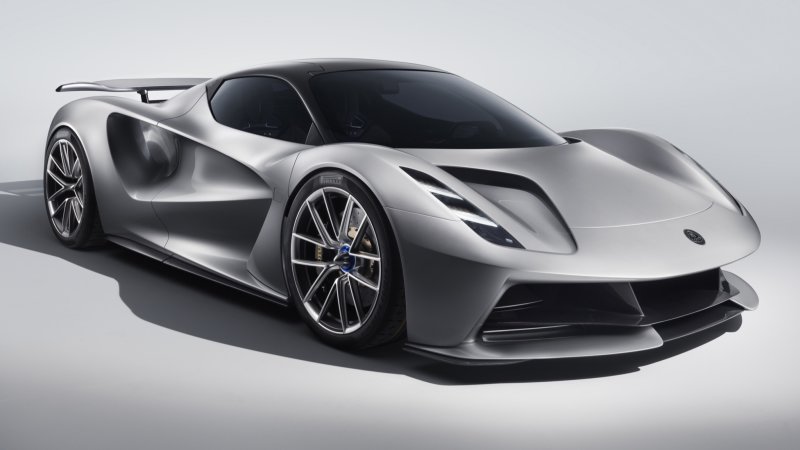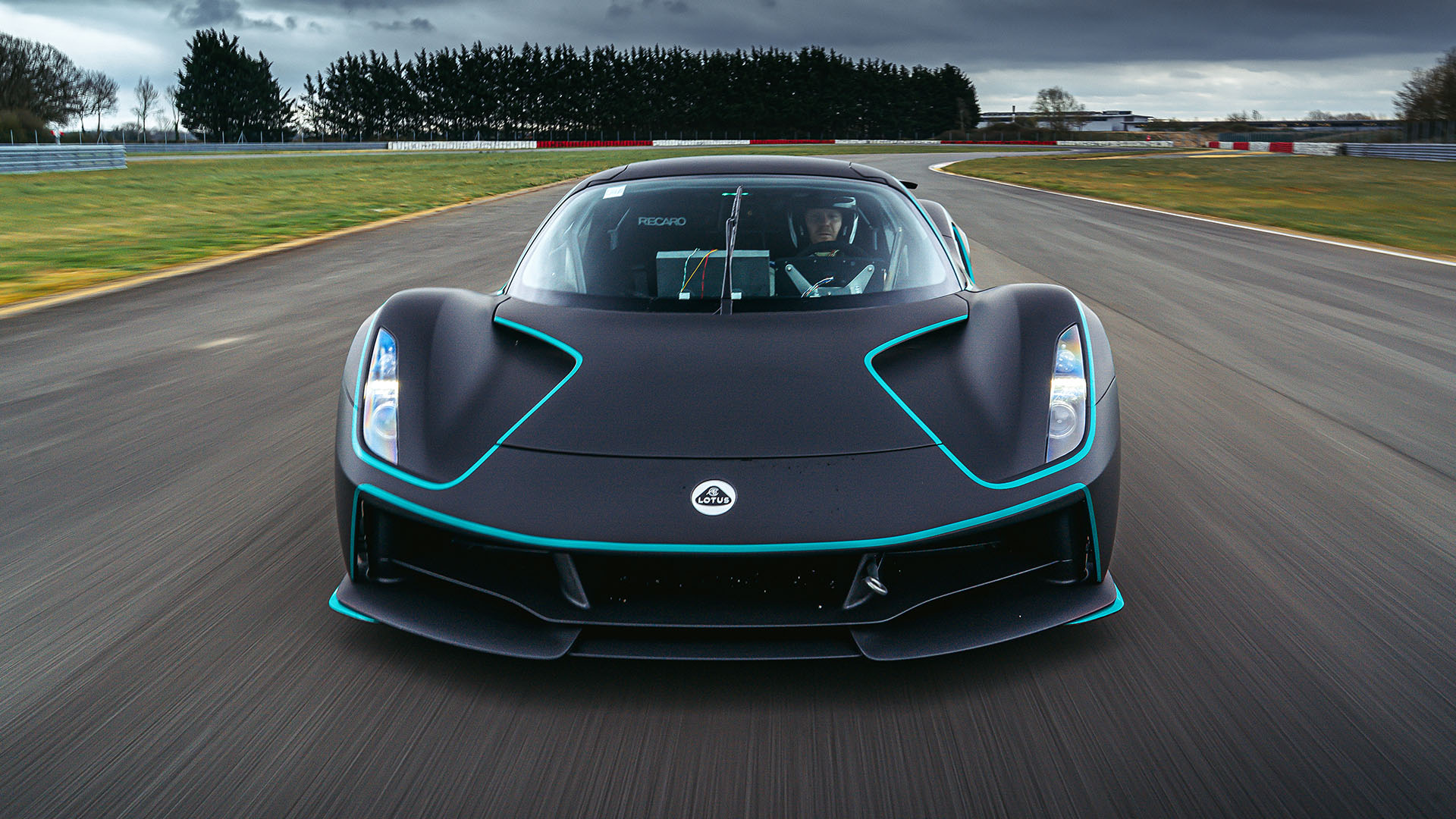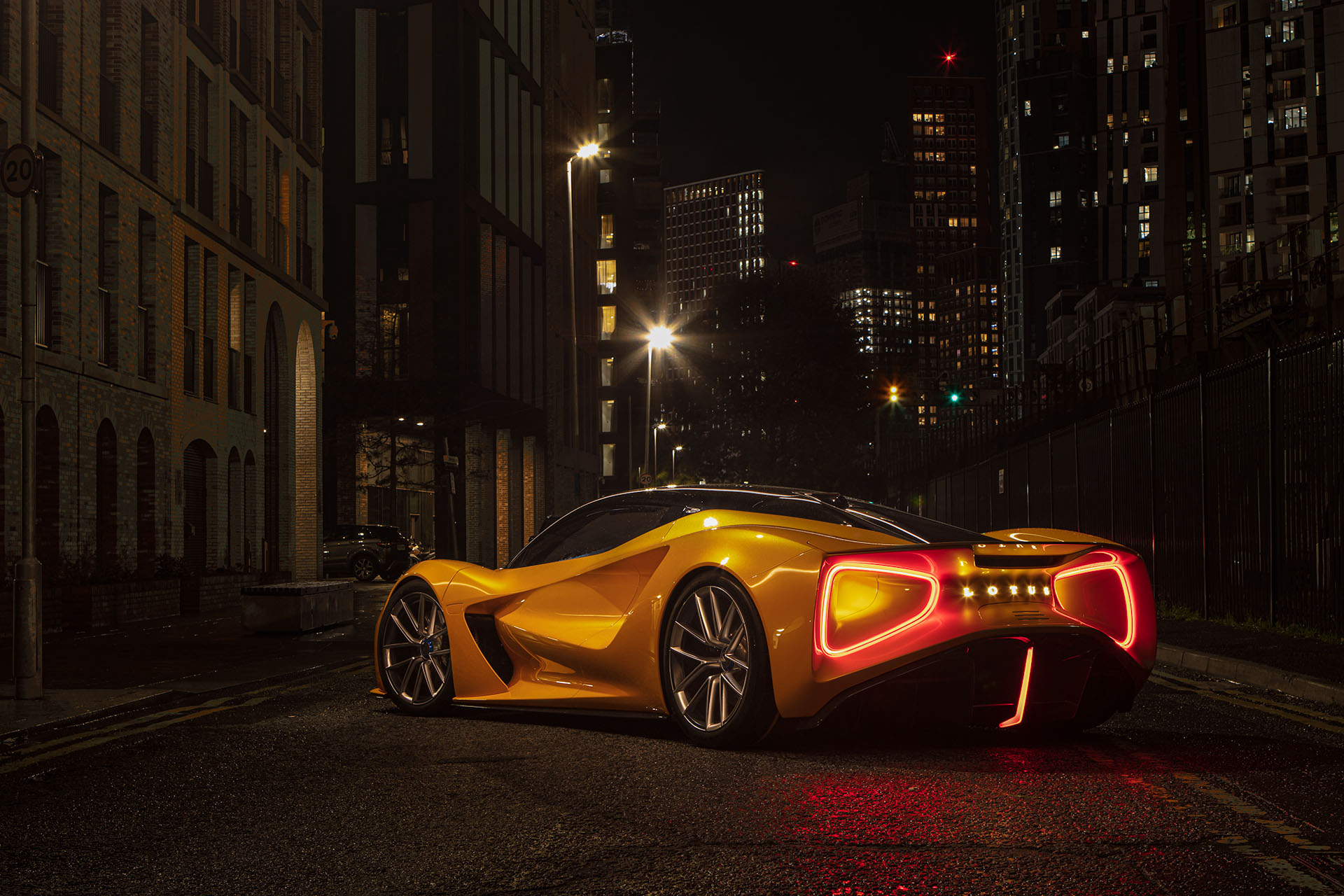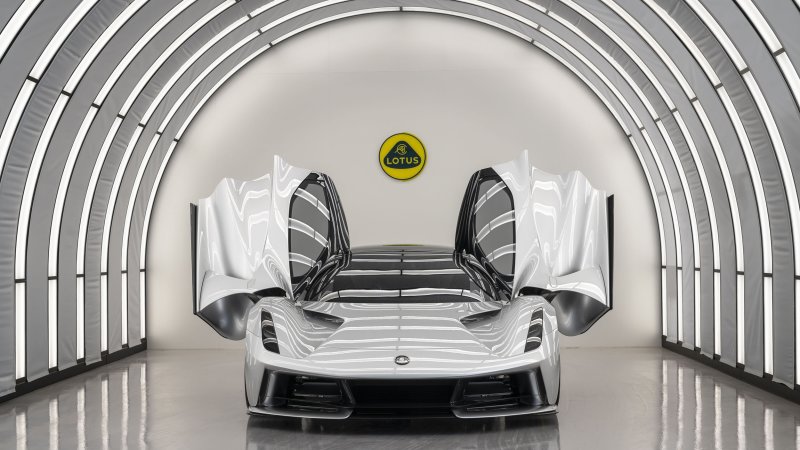Internally known as the Type 130, the new Lotus Evija combines several firsts for the British company into one wild shape. First of all, it’s the company’s first in-house all-electric car – the Lotus chassis provided to the likes of Tesla for the first Roadster doesn’t count. It’s also the company’s first hypercar, claiming an astonishing (and provisional) 1,973 horsepower. Perhaps more importantly, it’s the first all-new car from the company since the Evora, and the first to be conceived entirely under the ownership of China’s Geely.
Yup, that’s a lot of firsts. It’s not the first EV hypercar – it’ll have competition from the likes of Rimac and the upcoming Pininfarina Battista, plus the next-gen Tesla Roadster assuming that does eventually hit the market – but it’s definitely early on the scene. And just look at it – the styling is wild, incorporating some continuing Lotus themes – particularly around the greenhouse – but with an overall direction that’s much brasher than the company’s other products. The deep side sculpting resembles is complex and stylized, as are the rounded, narrow quadrangle taillights supported by a massive rear diffuser.
The front is arguably the least distinctive and biggest departure for the company. The verticality of the headlamps seems like a blend of the Ferrari F8 Tributo and the old Lamborghini Gallardo, without really aping either. Look closely and it appears to be an evolution of the shape of the Evora’s lamps, but without that context fresh in your mind it’ll appear more generic supercar than something uniquely Lotus.
The bodywork has some neat party tricks. Active aerodynamics allow for an F1-style Drag Reduction System, and there’s a deployable rear spoiler. There are no fixed side-mirrors; little cameras deploy from the front fenders and another camera embedded in the rear of the roof provides a rear view.
It’s also different. The extruded, bonded aluminum architecture we’re familiar with from the Elise/Exige line and the similar but unique Evora are gone, replaced by a company-first one-piece carbon fiber monocoque tub. Lotus is targeting a curb weight of approximately 3,700 lbs, and the lightweight tub (just 284 lbs) contributes to that. The battery is housed behind the seats, and feeds power to four individual motors, providing all-wheel drive and infinitely variable torque vectoring. It’ll claw its way to 62 mph in less than 3 seconds, says the company, with a top speed exceeding 200 mph.
The battery is a 70 kWh unit, providing a claimed 250 miles of range on the European test cycle and the ability to charge at 350 kW. That’d give an 80% charge in 12 minutes and a full charge in 18 minutes, Lotus says. When 800 kW chargers become available, the battery will have the ability to utilize those.
Handling is provided by spool-valve dampers, which are Multimatic units, but the wild part is that there are three dampers for each axle. Two are located at the corners and control the wheels, with the third mounted inboard to control what Lotus refers to as “heave” – this sounds preliminarily like a sort of pushrod anti-roll system, but we’ll have to learn more about it to be sure.
Lotus claims they’ll limit production to just 130 units, matching the internal vehicle designation. Sure, why not? And it’ll be built out of the company’s base in Hethel, U.K., although it’ll be interesting to learn more about the origin of its component parts. Remember, Geely also owns Volvo (and its Polestar sub-brand) and Lynk & Co., and the Polestar 2 will be produced in China. The company and its subsidiary brands are taking a hard turn towards electrification, and there’s likely to be an economy of scale working in the Evija’s favor.
The Evija will set you back about $2.1 million, the company says. Production starts next year, and a $300k deposit will secure yours. The order books are open, so don’t delay.




